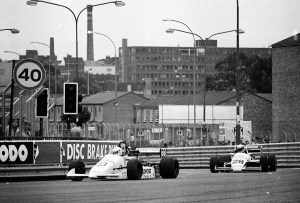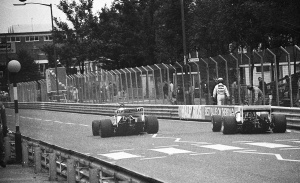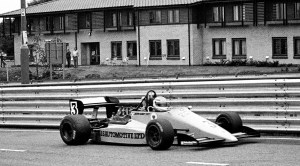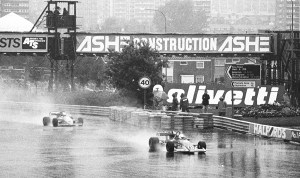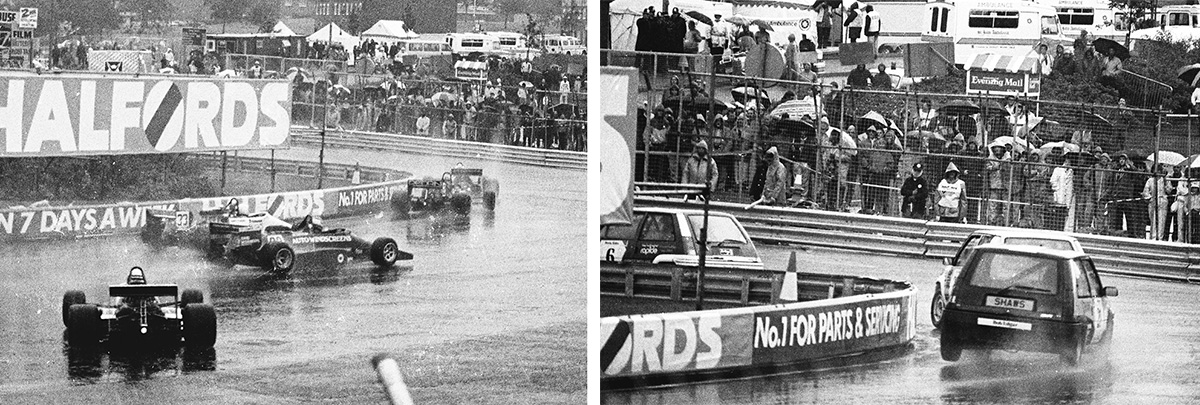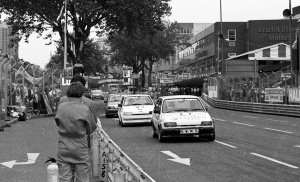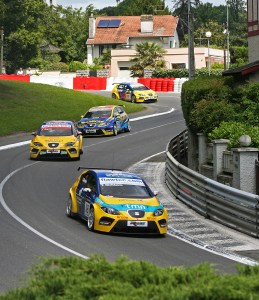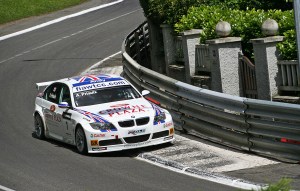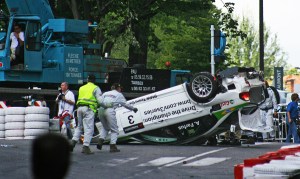The British Touring Car Championship opens this weekend at Donington Park with a real step into the unknown – and getting a handle on that unknown, according to many involved in the series, may take the entire season.
Much has already been written about the new hybrid powertrains that become part of the BTCC car DNA as of 2022, focusing mainly on the technical aspects of the system and how it is integrated into the car. But what remains far less clear is how going hybrid will affect the races – drivers and teams now have a whole new area of strategy to play with, but a lot more to think about as a result, so how soon will they really feel they are on top of the technology?
To recap. The BTCC hybrid system is built into the Xtrac gearbox and has no effect on the turbo engine or exhaust. It’s fed by a 48v battery mounted on the floor of the cockpit in its own safety cell – this battery will normally be recharged during a race by energy generated under braking, but should it need topping up between races this can be done in less than an hour using a standard 240v wall socket.
Unlike most road cars where a hybrid system is used to save fuel, the system in a BTCC race car will be a performance element, giving drivers and teams an extra element of race strategy. By pressing a button on the steering wheel drivers will be able to deploy up to 15 seconds of hybrid power per lap, which is equivalent to a 15-metre advantage over a car running without hybrid. They will only be able to deploy the system when they are at a speed of 120kph or above, and the hybrid won’t work on the first lap of either a race or after a safety car restart.
The big strategy element is how much total hybrid assistance each driver will have to use. BTCC organiser TOCA has used the arrival of the system to get rid of the ever-controversial success ballast, which penalised drivers for strong race results by means of adding weight for the next race.
Now instead of being weighed down with 75 kilos of ballast, the championship leader will arrive at the next meeting knowing they won’t have any hybrid assistance in qualifying, whereas the driver in second spot will have 1.5 seconds a lap, in third three seconds, and so on down to everyone below the top 10 who will have the full 15 seconds a lap available.
Race success will also reduce the amount of hybrid you get to play with, not by time, but by number of laps. For example if a race is of 17 laps or less, the championship leader starting race 1, and the winners of race 1 and 2 going into the next race, won’t have any hybrid power available for 10 of those laps. The next in line will go without hybrid for nine laps, and so on down to 10th who will only be penalised one lap. Everyone below 10th will have their 15 seconds on tap every lap.
If the races are longer than 17 laps, then the top penalty will be 15 laps without hybrid, then 13 and so on down to 10th.
All or nothing?
While drivers will be informed how much hybrid they have left courtesy of a dash display, and a blue light on the side of the car will alert spectators to when the driver is ‘pressing the button’, what drivers and teams won’t know is just when and by how much their rivals have used their allocation. So a driver could be battling an opponent with anything from 15 seconds of advantage to none at all. And this is where the great unknown comes in, the new strategy to be worked out.
Starting what he says will be his farewell season some 25 years on from his BTCC debut, with a record 97 race wins and two titles to his name, Jason Plato is the only active driver in the series to have raced the last four eras of the BTCC car – Super Touring, BTC Touring, Super 2000 and the current NGTC. And Plato, who having signed for BTC Racing will for the first time be at the wheel of a Honda built by the Team Dynamics operation headed by his long-time nemesis Matt Neal, admits that when the intended switch to hybrid was first announced in 2019, he was not a fan.
“I wasn’t that enamoured with it, I felt you have electric racing and that’s great, so let’s stay where we are,” Plato told me at the 2022 BTCC launch evening. “And I was wrong, because the whole industry has changed in those two or three years and having seen what Alan Gow, his team and the people at Cosworth have come up with, it’s a really clever idea because as Alan says, if something goes wrong it’s not going to stop us racing.”
He is a fan of the emergence of more strategy that the driver and engineer must master. “While the improvement in lap time and race distance time, and how it will change racecraft, is small, it will make a difference, and that’s going to be quite tricky to get that strategy right.”
Weather a factor
Plato believes how and where hybrid deployment is used will be different at every circuit, and will even be affected by changes in wind, both in direction and strength. Such factors will affect how much hybrid deployment is used in qualifying; “(this) will then determine where you are on the grid for race day, which will then dictate how you optimise your deployment, to attack, and vice versa, when you are at the sharp end of the grid, how you use your hybrid deployment to defend.”
Plato describes as exciting the fact that there are now so many new variables to master. “That’s going to require a lot of analysis and opinion, from a race driver’s perspective and also from an engineering perspective. There’s a lot to get wrong there but the sexy side is there’s a lot to get right.
“It’s all going to be small amounts – this is not a push-to-pass type system (as used in series such as IndyCar), but if people get it right I think it will play quite an important role over how the championship pans out. That’s going to be a challenge and therefore that’s going to be exciting.”
Dan Cammish, who in 2019 was robbed of his first BTCC title by a brake failure half a lap from the end of the final race of the season, returns to the BTCC after a year out, alongside reigning champion Ash Sutton at the wheel of Motorbase Fords boosted by backing from US auto part giant NAPA. While he thinks the workings of the hybrid system are quite easy for a driver to get on top of, he too sees the races as complete unknowns.
“From a driver’s point of view there’s a little bit to understand and learn about the hybrid,” Cammish told me, “but I think that very quickly we will get to understand whereabouts on the track is optimum – to be honest it’s almost common sense, you are going to know the most obvious places to press the button.
“But while it’s alright using it for a fast lap in qualifying, you can’t judge when someone else uses it around you in a race, how you are going to use it to defend, how many people have got it, who doesn’t have it…”
It is here where Cammish says there are lessons to learn. “While previously you knew if a car was carrying success ballast, you might not know now how many laps of hybrid they’ve used, how many laps they’ve got left – you could be caught unawares but ultimately you might catch someone else napping as well.”
Desiring a diet
Cammish is among those that believe tyre wear could also play a bigger factor in races – installing the hybrid has added 75 kilos of weight to the cars, making them effectively react as if they were carrying the full success ballast of last season. “I think it’s a shame the cars are so heavy – as a driver you feel that extra, it’s like having a passenger. It will lead to more tyre wear, mean that the cars aren’t quite on their toes like they were previously. They’ve lost a little bit of sparkle and it’s not like they were that light to begin with.”
Making the tyres work is the concern of Goodyear racing manager Mickey Butler. But he told me the challenge is not so much about the weight, which is a known factor from cars in previous seasons running maximum ballast, but how the hybrid system will put torque bursts through the tyres. “They can’t use the torque until they get into third gear, and in a straight line,” Butler said. “It will be a big learning curve for them, for us, for everything.”
Slightly easing the complexity is the lack this year of an option tyre of either softer or harder compound, which in previous seasons each driver had to choose in one of the three races at a meeting. According to Butler the plan is to run with a 2021 specification medium hard tyre, but Goodyear will need to use the year as a learning curve like everybody else.
“We’ll assess the wear at each track, what we need to change and we also have a mid-season test planned where we can adapt, maybe change things for 2023. But I think people really need to realise it’s a clean slate for the teams, the drivers, but for us as well.
“We are all going through the same pain barrier and I look forward to the challenge. Is it going to be easy, no. Is every race weekend going to be a test event, yes.”
Every day a school day
Butler believes the circuits will dictate how long it takes to really get across the hybrid from a tyre point of view, but everyone will be learning all season long. “Some of the most aggressive circuits are in the first half of the season, such as Thruxton, Brands Indy, but we won’t be going to Silverstone until September and Silverstone has its own issues. You can’t evaluate a tyre from one event, you have to look at the picture over the course of the season.”
Dick Bennetts, owner of West Surrey Racing which has taken Colin Turkington to four BTCC titles, believes his team is effectively working through the “few new surprises” the hybrid system is throwing up, and he is looking forward to the new and very different race strategy – while still bemoaning the fact that rear-wheel-drive cars must be 30 kilos heavier than their front-wheel-drive rivals.
As to how much of the season it will take before everyone is comfortable with the system, Bennetts said, “normally TOCA reviews things after three meetings, that’s nine races, so we will see how we go up to then.”
Plato, however, believes it will take longer than that, and there will be no quick handle on the hybrid. “I think teams will be learning right until the end of the season, I really do.”
And if he has a good season with the hybrid, boosts his current 97 race wins to 99, and at the end of the year Matt Neal announces he is returning in a Honda in 2023, will retirement still be an option? Jason smiles and adds; “well we’d certainly have a conversation…”




